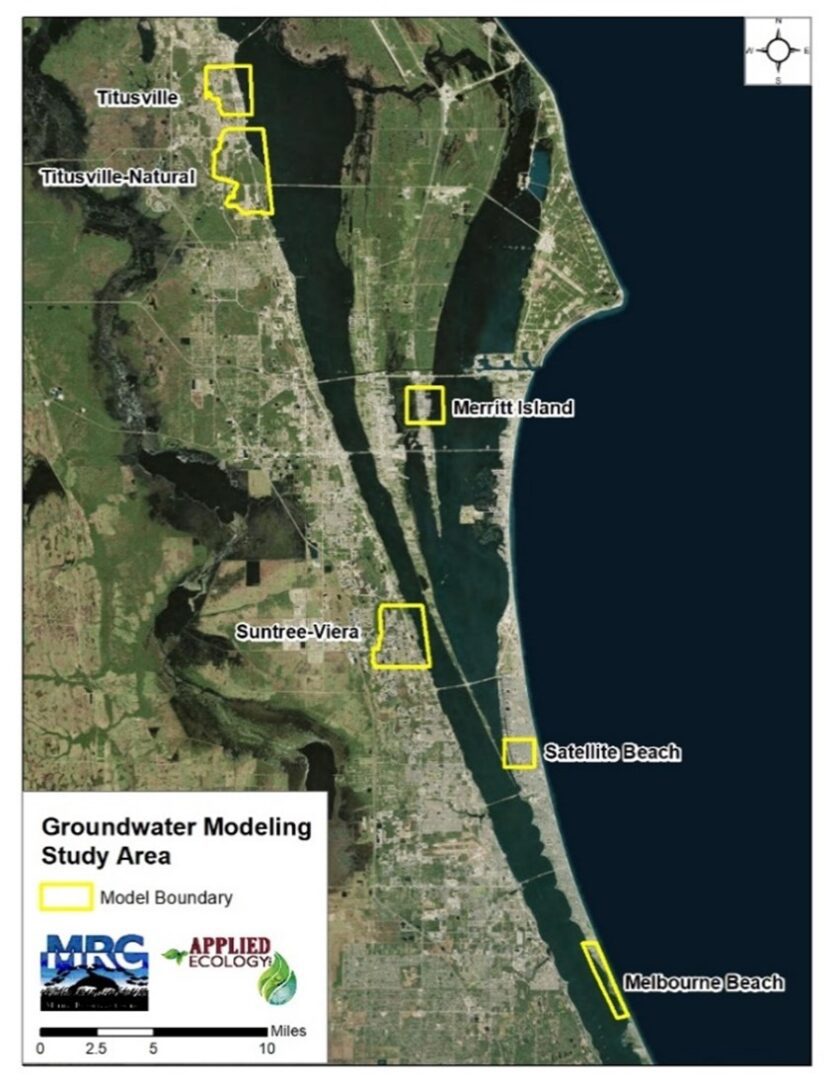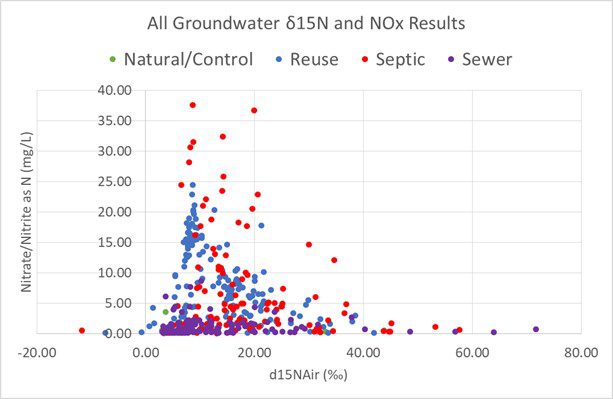Groundwater Pollution
Engaging the Community in Solutions Study and Save Our Indian River Lagoon Community Groundwater Monitoring
The goal of this project is to better understand the extent that wastewater contaminated groundwater is impacting the Indian River Lagoon by examining contamination in different regions of Brevard County within communities that are receiving three different wastewater treatments. The data collected was used to identify critical areas of groundwater contamination, guide wastewater retrofit project selection and evaluation, as well as verify and update nutrient pollutant load estimates to the Indian River Lagoon.
In June 2017, Applied Ecology, Inc. (AEI) developed a methodology for identifying groundwater sources of nutrients contributing to muck accumulation in Turkey Creek as part of a State Legislature funded pilot study performed in collaboration with the Florida Institute of Technology’s Indian River Lagoon Research Institute (IRLRI). The project used the ArcNLET (ArcGIS-based Nitrate Load Estimation Toolkit) groundwater model to select study sites for well installation, and subsequently collect monthly groundwater samples in the Turkey Creek watershed to calibrate and refine pollutant load spatial models. The successful methodology and significant results from this initial pilot project led to a county-wide groundwater modeling and monitoring initiative.
In April 2018, Marine Resources Council (MRC) and AEI initiated an extensive groundwater sampling effort that included installing and monitoring an additional 34 shallow groundwater wells throughout Brevard County. County-wide environmental and infrastructure GIS datasets were acquired, converted from multiple formats, geocoded, digitized from best available data, and organized in an ESRI geodatabase format for well siting and groundwater modeling efforts. Homeowners within those communities were recruited for participation, and property access agreements were executed for well installation and sampling.
The 45 monitoring wells were installed in 13 residential neighborhoods and three natural areas located in five regions of Brevard County, including the mainland and barrier islands were distributed across 11 communities that had different wastewater treatment types: 1) septic tanks; 2) municipal sewer systems; or 3) municipal sewer systems with reclaimed irrigation.
Regions and treatment types were compared with each other and with natural areas to see differences in the extent of nutrient pollution. Isotopes were used to clarify sources and denitrification dynamics. If a natural area was located nearby, monitoring wells were installed there as an indication of background groundwater nutrient conditions. GIS mapping, spatial data acquisition and analyses, geospatial and statistical analyses, groundwater modeling, a representative behavioral survey, and reporting were all important components of this project. Field data collected during the first 18-months of monitoring were used to compare against the uniform TN and TP concentrations in the watershed loading model that estimated baseflow nutrient loadings into the Indian River Lagoon.
The study design also included the implementation of an intervention strategy in one septic community, which was already initiated and is being monitored closely for changes in groundwater quality. The selected intervention strategy is inexpensive and will help determine the feasibility of engaging residents in an in-situ septic treatment method.

The 18-month study was extended in 2019 by Brevard County as an integral part of the Save Our Indian River Lagoon Project Plan (SOIRLPP), under the “Respond” component. The groundwater data provides new information by recommending annual amendments to the Save our Indian River Lagoon Project Plan. Recently, as part of the project extension and adaptation to critical needs, AEI initiated a surface water seepage study within the studied Turkey Creek region. Turkey Creek provides an opportunity to work with Florida Tech and other scientists who are already examining surface water nutrients. Data from the seepage study will enhance the understanding of the relationship between groundwater and receiving surface waters, provide a critical missing link between load estimates and actual conditions, and determine the potential attenuation of the measured septic concentration data and actual denitrification rates.
Finally, preliminary results from both the pilot study as well as the first quarter of the SOIRLPP Groundwater Monitoring study prompted the consideration of a moratorium on conventional septic tanks within a certain distance from the IRL and connected waterways. Results of this analysis were used to scientifically support the adoption of a permanent ordinance within Brevard County.

